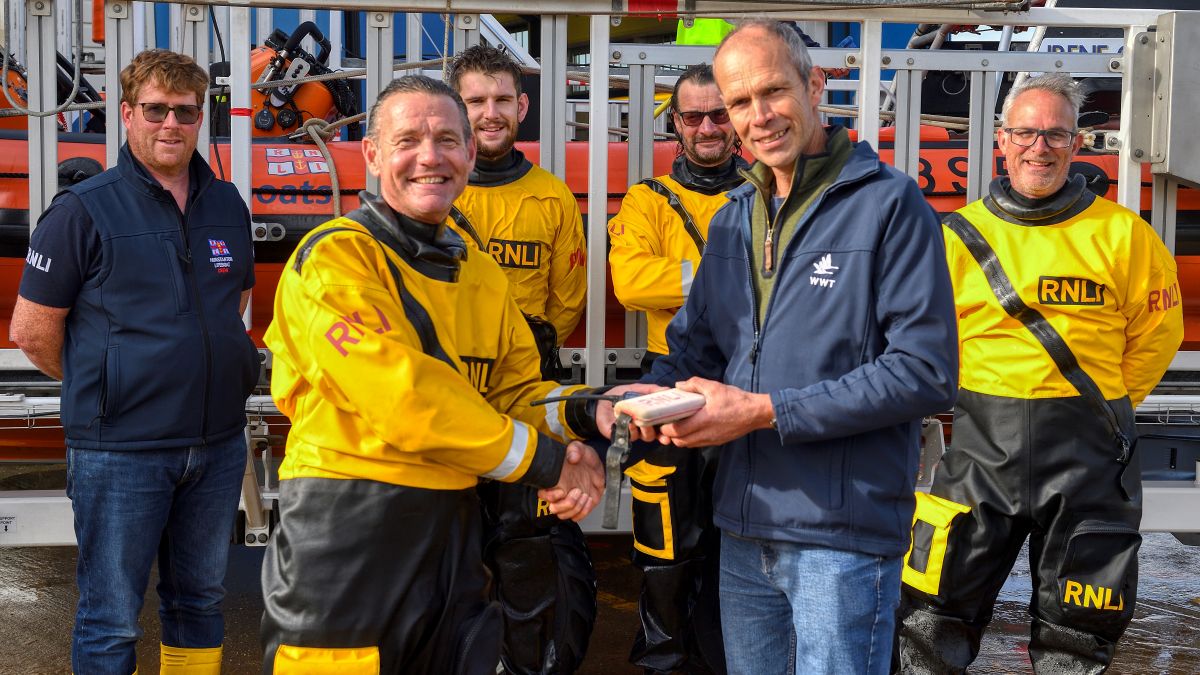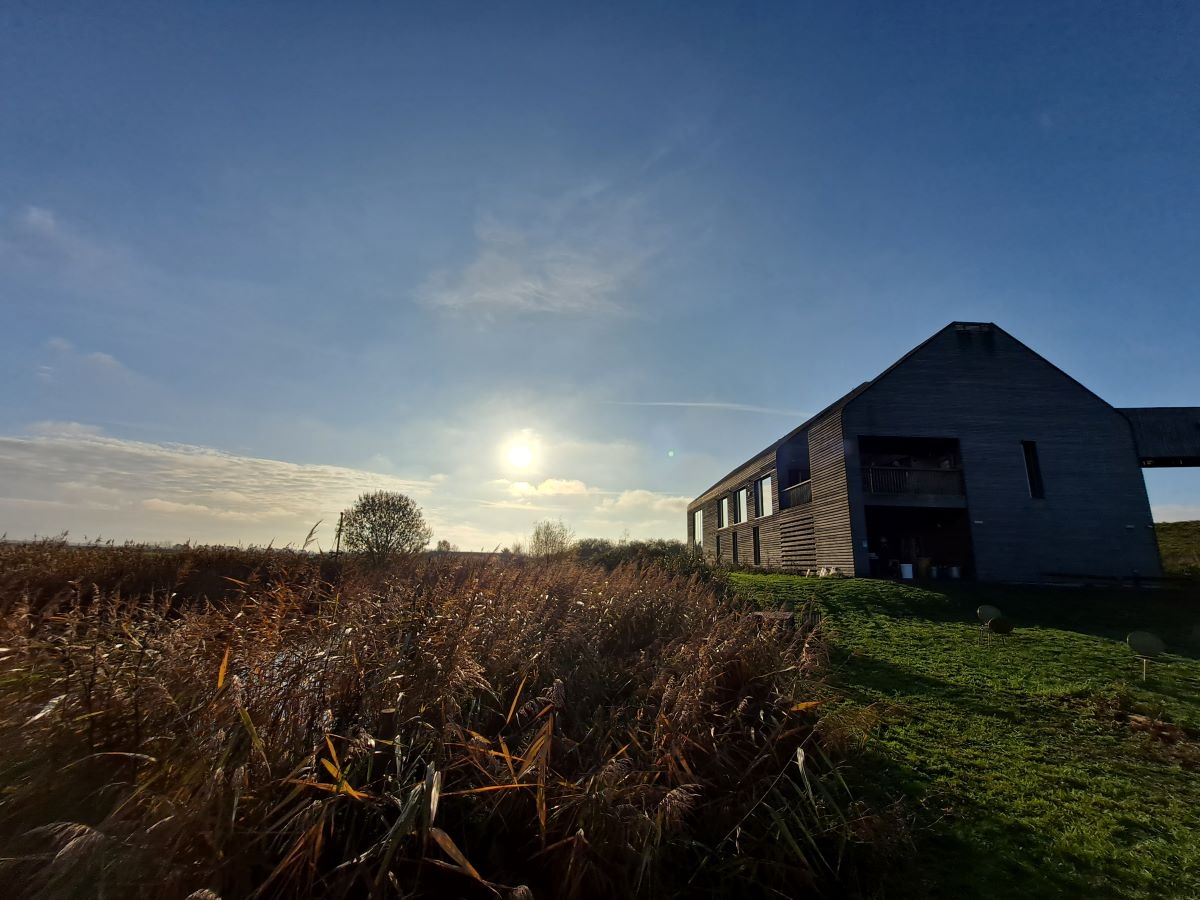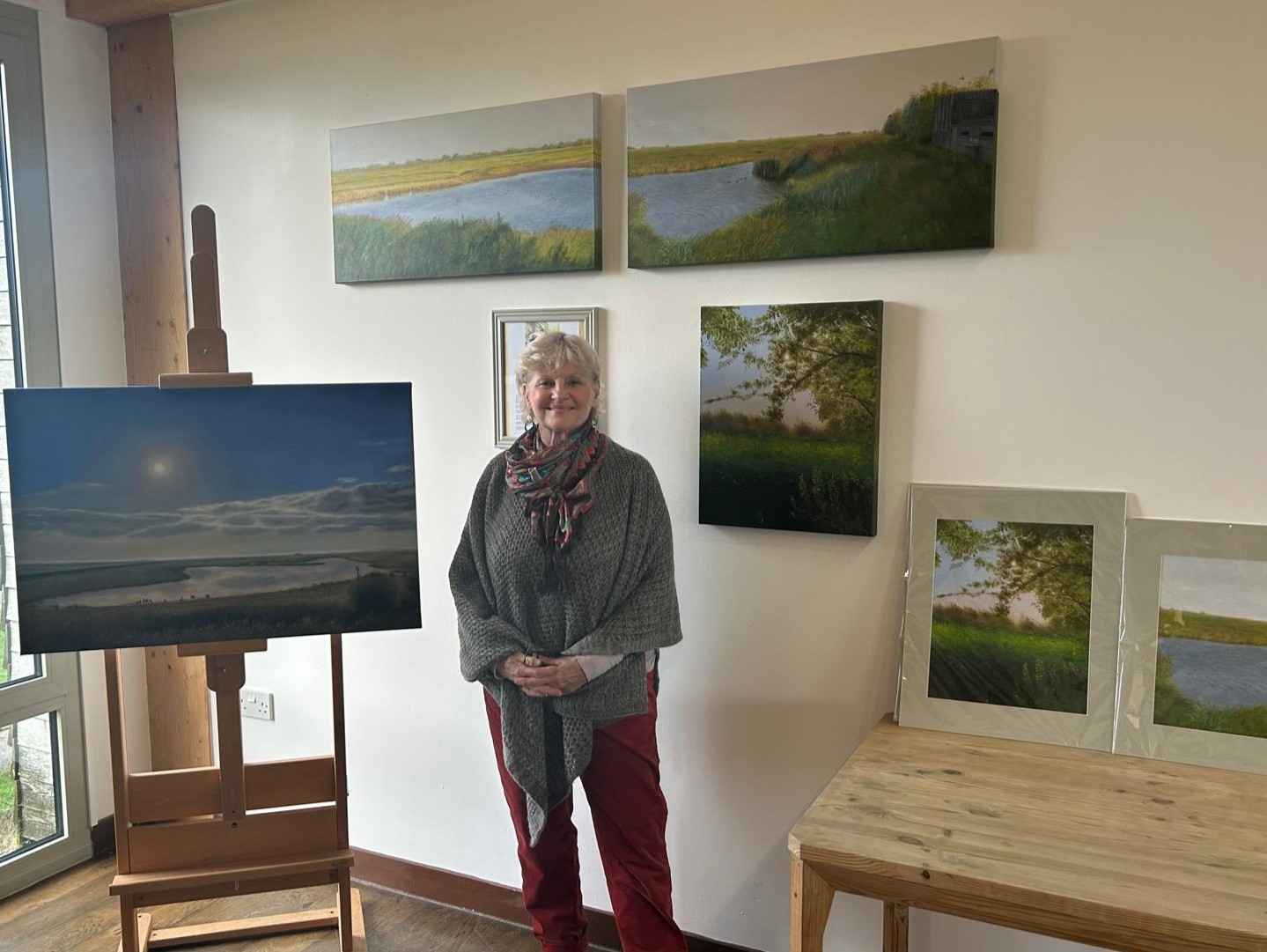Iceland calls to Welney whooper swans
Whooper swans hatched from injured, resident birds on our wetlands have been recorded migrating north towards Iceland for the first time.
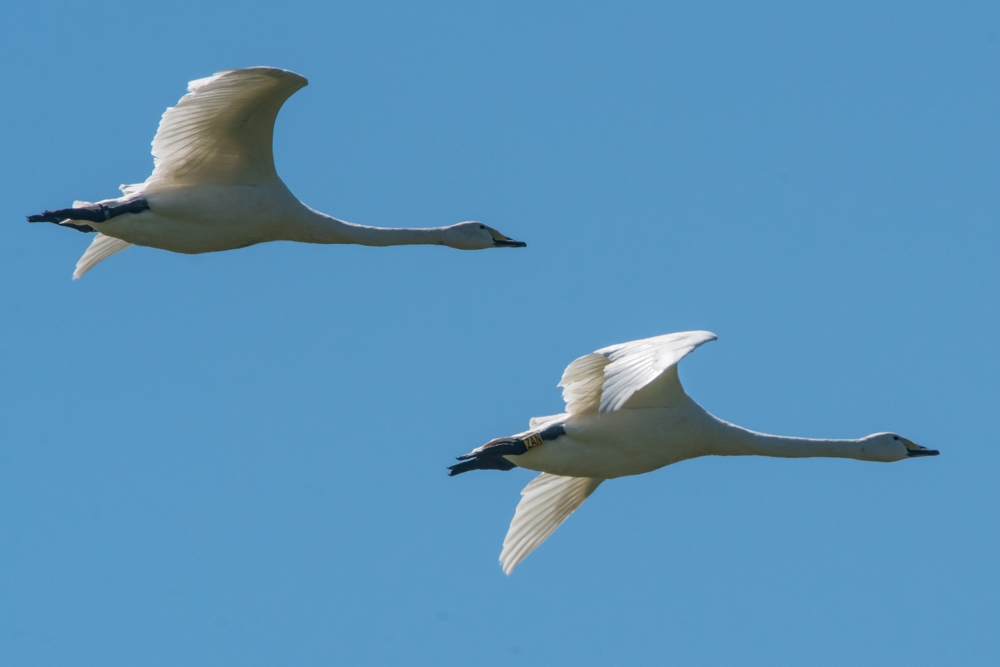
During 2018 two pairs of whooper swans fledged young, all six of which were fitted with leg rings that have individual codes. This method of tracking birds is reliant on bird watchers spotting, identifying and reporting these coded, coloured rings. The team at WWT Welney were not sure if the birds would even leave the Ouse Washes. However, so far this summer three of the birds have been reported on their travels away from WWT Welney.
‘ZAN’ was the first swan to be spotted flying over Bempton Cliffs, East Yorkshire at the end of May. An eagle-eyed photographer managed to capture this swan flying north with another ringed bird, possibly a sibling.Unfortunately the coded ring on the second bird was not visible at the time to confirm if it was another Welney whooper swan. Then further sightings came in June, ‘ZAN’ together with its sibling ‘ZAH’ were reported in Angus, Scotland. To add to the excitement ‘ZAB’, one of the birds from the second brood has also journeyed north making it to Fife, Scotland.
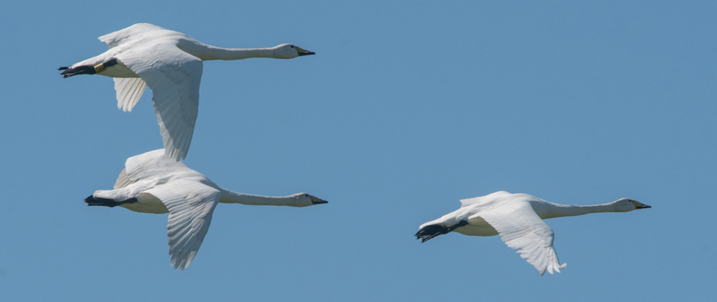
Credit: Tim Melling
Hetty Grant, Warden at WWT Welney, said:
It has been exciting to see how far these birds would venture from our wetland reserve as they missed out on the experience of making the migration from Iceland to the UK in autumn. Most whooper swans accompany their cygnets on the migration 1,200 miles south for winter.
These cygnets might not make the full migration to Iceland this summer, even if they do they will still be too young to make a breeding attempt. We will be eagerly scanning leg rings this winter as the whooper swans arrive, to see if they return to WWT Welney.
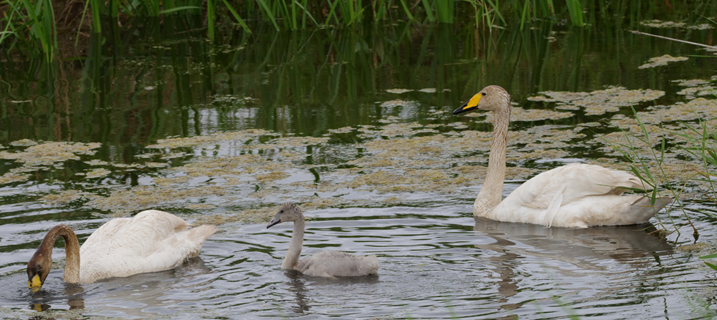
Credit: Bob Ellis
Whooper swans are a winter visitor to the UK, escaping the Arctic conditions in Iceland for the relatively mild conditions here. Since 2011 whooper swans that are unable to make the migration to Iceland, due to wing injuries, have bred on the Ouse Washes at Welney. The wing injuries seen on the birds that remain in the UK are most likely caused by power line collisions.
David Roberts, Assistant Warden at WWT Welney, said:
This summer we have again seen two pairs of whooper swans with broods of cygnets on the reserve. Over the coming weeks and months visitors will be able to watch them grow to the size of the adults and turn from fluffy babies to elegant juveniles.
Due to the injuries of the parents, restricting their range, visitors are given an opportunity to see whooper swan cygnets without having to travel to remote locations in northern Scotland or even Iceland.
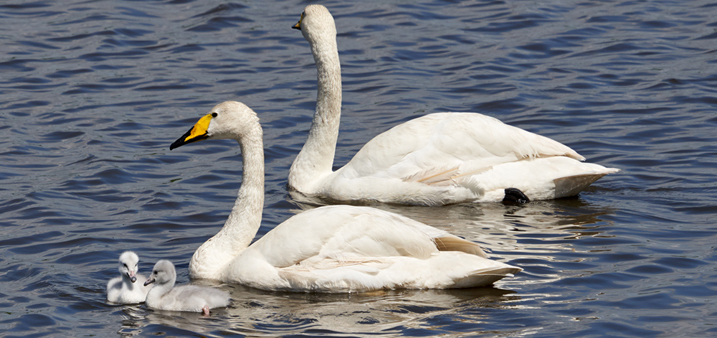
Credit: Kim Tarsey
Visitors can enjoy views of the swan families from the hides whilst the parents and young are feeding, drinking and preening in the pools of water. The adult whooper swans are white with a yellow and black bill, whilst the cygnets are a silver, grey colour with a white or pink and black bill. All being well, by the time swans start arriving from Iceland in the autumn the Welney cygnets will be adult sized and may have even attempted their first flights around the reserve.

